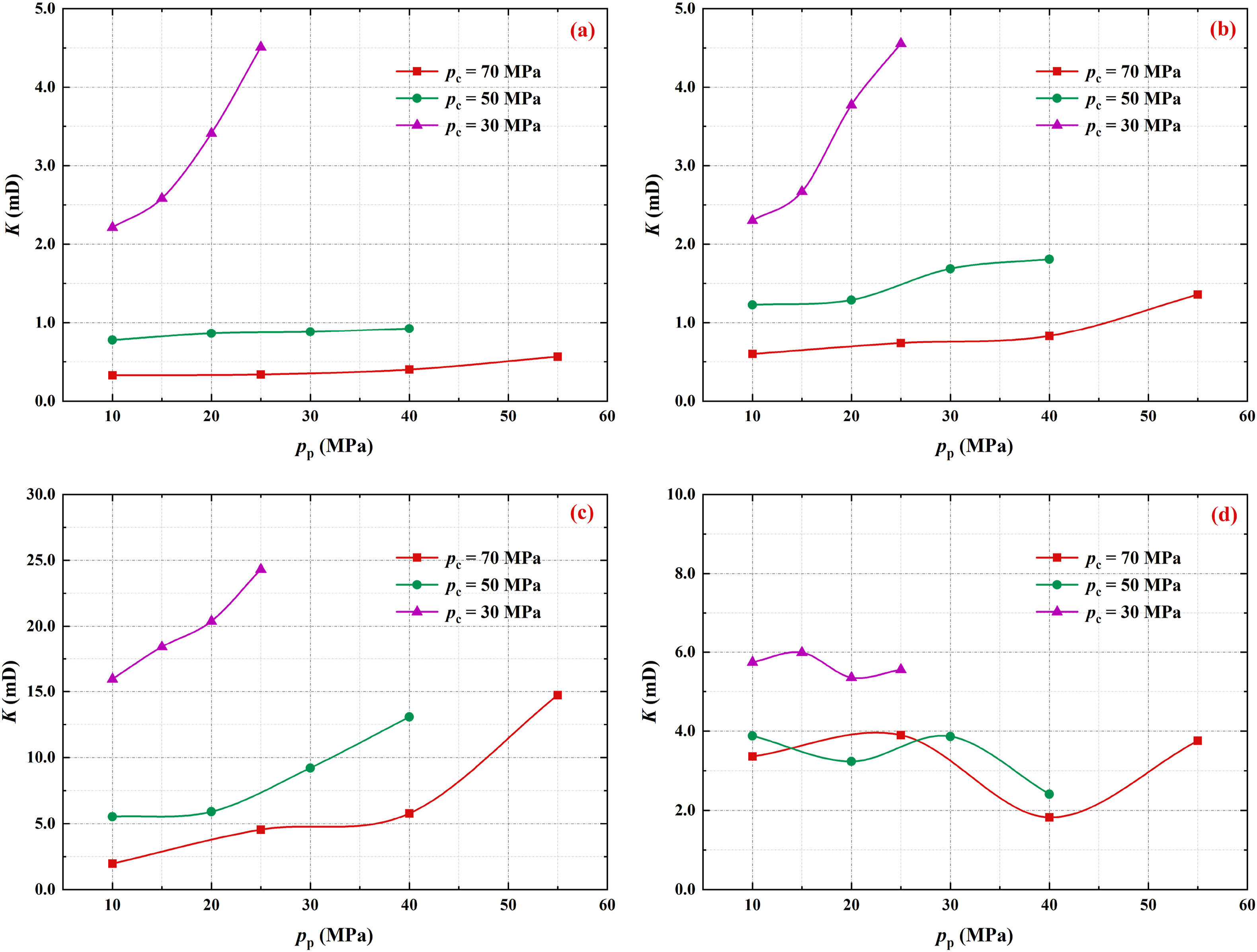JRMGE / Vol 16 / Issue 3
Impact of effective stress on permeability for carbonate fractured-vuggy rocks
Ke Sun, Huiqing Liu, Juliana Y. Leung, Jing Wang, Yabin Feng, Renjie Liu, Zhijiang Kang, Yun Zhang
Show More
a State Key Laboratory of Petroleum Resources and Prospecting, China University of Petroleum, Beijing, 102249, China
b School of Mining & Petroleum Engineering, University of Alberta, Edmonton, T6G 1H9, Canada
c SINOPEC Petroleum Exploration and Production Research Institute, Beijing, 100083, China
2024, 16(3): 942-960. doi:10.1016/j.jrmge.2023.04.007
Received: 2023-01-11 / Revised: 2023-04-22 / Accepted: 2023-04-26 / Available online: 2023-05-29
2024, 16(3): 942-960.
doi:10.1016/j.jrmge.2023.04.007
Received: 2023-01-11
Revised: 2023-04-22
Accepted: 2023-04-26
Available online: 2023-05-29
To gain insight into the flow mechanisms and stress sensitivity for fractured-vuggy reservoirs, several core models with different structural characteristics were designed and fabricated to investigate the impact of effective stress on permeability for carbonate fractured-vuggy rocks (CFVR). It shows that the permeability performance curves under different pore and confining pressures (i.e. altered stress conditions) for the fractured core models and the vuggy core models have similar change patterns. The ranges of permeability variation are significantly wider at high pore pressures, indicating that permeability reduction is the most significant during the early stage of development for fractured-vuggy reservoirs. Since each obtained effective stress coefficient for permeability (ESCP) varies with the changes in confining pressure and pore pressure, the effective stresses for permeability of four representative CFVR show obvious nonlinear characteristics, and the variation ranges of ESCP are all between 0 and 1. Meanwhile, a comprehensive ESCP mathematical model considering triple media, including matrix pores, fractures, and dissolved vugs, was proposed. It is proved theoretically that the ESCP of CFVR generally varies between 0 and 1. Additionally, the regression results showed that the power model ranked highest among the four empirical models mainly applied in stress sensitivity characterization, followed by the logarithmic model, exponential model, and binomial model. The concept of “permeability decline rate” was introduced to better evaluate the stress sensitivity performance for CFVR, in which the one-fracture rock is the strongest, followed by the fracture-vug rock and two-horizontal-fracture rock; the through-hole rock is the weakest. In general, this study provides a theoretical basis to guide the design of development and adjustment programs for carbonate fractured-vuggy reservoirs.
Keywords: Effective stress, Permeability, Carbonate fractured-vuggy rocks, Structure characteristics, Stress sensitivity
Article Data
Author(s) Information
Ke Sun

Dr. Ke Sun is currently a PhD student at the College of Petroleum Engineering, China University of Petroleum-Beijing, China. His major is Oil & Gas Field Development Engineering and his research interests lie primarily in unconventional oil and gas development, with particular emphasis on deep fractured-vuggy reservoir development. Up to now, he has published eight papers as the first author in reputable journals and conferences in the field of petroleum engineering and participated in two academic research projects funded by the National Natural Science Foundation of China as the student leader. He is the recipient of the Outstanding Winner (Grand Champion) of the 9th China Petroleum Engineering Design Competition, the Outstanding Student Paper Award at the 2019 International Petroleum and Petrochemical Technology Conference, and the China National Scholarship for Doctoral Students.

